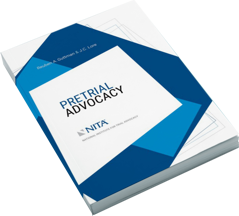Trial lawyer Reuben Guttman describes a meeting with renowned lawyer and political activist Ralph Nader.
Half a century after publishing Unsafe at Any Speed, a book exposing the hazards of General Motor’s Corvair, consumer advocate Ralph Nader is holding an anniversary celebration in the form of what he calls a “civic mobilisation.” The event will be held at Washington DC’s Daughters of the American Revolution (DAR) Constitution Hall, 26-29 September, 2016.
The DAR Hall itself is not without historic significance. Renowned African American singer Marian Anderson appeared there a number of times. But that was after 1939, when she had been denied the right to appear on the DAR stage and as a result thousands of DAR members, including First Lady Eleanor Roosevelt, resigned their membership. Anderson instead sang on the steps of the Lincoln Memorial.
Nader has himself been a slice of American history. He is not just a consumer advocate but, at least for my generation, has been “the” consumer advocate. His trajectory was made possible by his own efforts, those he assembled to work with him or for his causes, and not because of his ties to pre-existing institutions or parties. Fifty years after the publication of Unsafe at Any Speed, Ralph Nader is an American institution.
And so when Chris Nace, one of the nation’s leading trial lawyers, asked me to sit with Ralph Nader and a handful of other trial lawyers to hear about Nader’s plans for the “civic mobilisation,” I could not resist the opportunity. Our paths had crossed at a distance over the years through various interactions with his organisations, but I had never really had the opportunity to talk with him in a small group setting. Still, Nader seemed part of my orbit. Back in elementary school, I remember that our Weekly Reader had a feature story on “Nader’s Radars,” a group of young lawyers investigating corporate abuse. I was proud to raise my hand and tell my teacher that my older brother was one of them and working for Nader’s Center for Study of Responsive Law. Many years after I became a lawyer, I had the opportunity to serve as outside litigation counsel to the Oil, Chemical & Atomic Workers Union (OCAW); the union whose members or leaders included whistleblower Karen Silkwood and Tony Mazzochi, the father of the Occupational Safety and Health Act. The OCAW leadership recognised the symbiotic relationship between organised labour and the consumer movement and within the OCAW circles, Nader, or just “Ralph,” was a moral compass.
At the head of a conference table of trial lawyers at the law offices of Paulson & Nace, Nader talks about tort law under siege. His efforts and use of citizen’s suits and tort law have led to safer consumers goods, from automobiles to children’s toys, and yet Nader is mystified that the proponents of these suits are in some circles characterised as ambulance chasers while those that defend the abuses of corporate greed are deemed “white shoes” lawyers.
He talks about the compulsory arbitration which is privatising the judicial system and eliminating the published precedent that forms the backbone of the common law tradition. He muses about the ethics of corporate lawyers – as officers of the court – who bolt compulsory arbitration clauses into contracts for consumer goods and services and thus eliminate any right to adjudication in an open court of law, including trial by jury. He notes how even his Harvard Law School classmate, Professor Arthur Miller, one of the most cited experts on the Federal Rules of Civil Procedure, has written about the Supreme Court rulings on class actions, and pleading and summary judgement standards that have tipped the litigation playing field in favour of large corporations and against consumers.
At 82, Nader is still an imposing physical and intellectual presence. He is tall and trim and speaks forcefully about the way the judicial system ought to work.
Nader talking about the practice of law is like listening to an Ivy League Law School Professor from the movie The Paper Chase. And yet, ironically, Nader – who wants to address issues that impact every day consumers – may very well be too practical in terms of his goals to be a tenured professor at a contemporary American Law School. Would US News – which ranks law schools – even give bonus points to a school that placed Nader on its faculty? For his September “civic mobilisation,” Nader would welcome the attendance of law students, but hints at concern that the modern legal theorists who serve as professors in our nation’s legal institutions will not see value in encouraging students to forgo class and listen to talks from some of the nations’ leading practitioners, whistleblowers and scholars who are involved in the practical application of consumer or tort law.
For a Washington DC gathering, the sit down with Nader is an aberration. There is no discussion of compromise or even fund raising. The talk is simply about getting the word out about the “civic mobilisation” and filling the 3,500 seats at Constitution Hall. I wonder, of course, whether such a gathering will make a difference, but remind myself that change is incremental and few people in American history have driven change impacting everyday life as much as Ralph.
